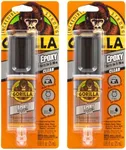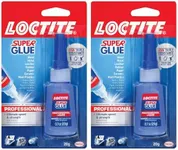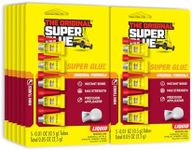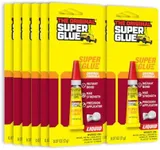Buying Guide for the Best Glue For Metals
Choosing the right glue for metals can be crucial for ensuring strong and durable bonds. Whether you're working on a DIY project, repairing metal objects, or engaging in industrial applications, understanding the key specifications of metal adhesives will help you make an informed decision. Here are some important factors to consider when selecting glue for metals.Bond StrengthBond strength refers to the ability of the glue to hold two metal surfaces together under stress. This is important because metals often need to withstand significant forces and loads. Bond strength is usually measured in pounds per square inch (PSI). For light-duty applications, a lower PSI may be sufficient, while heavy-duty or industrial applications will require a higher PSI. Consider the type of project and the amount of stress the bond will need to endure when choosing the right bond strength.
Curing TimeCuring time is the period it takes for the glue to fully set and reach its maximum strength. This is important because it affects how quickly you can use the bonded metal parts. Curing times can range from a few minutes to several hours. If you need a quick fix, opt for a fast-curing adhesive. For projects where precision and maximum strength are more important, a longer curing time may be acceptable. Assess your project timeline and urgency to determine the appropriate curing time.
Temperature ResistanceTemperature resistance indicates how well the glue can withstand extreme temperatures without losing its bonding properties. This is crucial for metal applications exposed to high heat or cold. Temperature resistance is typically measured in degrees Fahrenheit or Celsius. For outdoor or high-heat applications, choose a glue with high temperature resistance. For indoor projects or applications with stable temperatures, standard temperature resistance may suffice. Consider the environmental conditions the bonded metal will face to select the right temperature resistance.
Chemical ResistanceChemical resistance refers to the glue's ability to withstand exposure to various chemicals without degrading. This is important for metals that may come into contact with oils, solvents, or other chemicals. Chemical resistance ensures the bond remains strong and intact despite chemical exposure. For industrial or automotive applications, high chemical resistance is essential. For household projects, moderate chemical resistance may be adequate. Think about the types of chemicals the metal will be exposed to when choosing the glue.
FlexibilityFlexibility is the ability of the glue to maintain its bond while allowing some movement between the metal surfaces. This is important for applications where the metal parts may experience vibrations or slight movements. Flexible adhesives can absorb these movements without breaking the bond. For applications with dynamic forces, choose a glue with high flexibility. For static applications, flexibility may be less critical. Consider whether the bonded metal parts will need to move or stay rigid to determine the right level of flexibility.
Application MethodApplication method refers to how the glue is applied to the metal surfaces. Common methods include liquid, gel, or tape adhesives. This is important because it affects ease of use and precision. Liquid adhesives can be spread evenly but may require careful handling to avoid mess. Gel adhesives offer more control and are less likely to drip. Tape adhesives provide convenience and clean application but may not be suitable for all types of bonds. Consider your comfort with the application method and the precision required for your project when choosing the right type.






















